Changes in the educational level of Spanish workers
There is an ongoing need to encourage investment in human capital and to adapt the education system to the new skills demanded by the market.

One of the most positive aspects of the Spanish economy’s recent performance is the strength of the labour market: the volume of employment (as of Q3 2023) exceeds the pre-pandemic level (Q4 2019) by 1.3 million (6.5%). In this Focus, we analyse how job creation has behaved in this period, disaggregated by economic sector, workers’ educational level and professional categories, which has reflected the gradual change in the profiles of the occupations demanded by companies, driven primarily by the spread of new technologies and the digitalisation of the economy.
Following the pandemic, some of the best performing sectors in terms of job growth have included professional, scientific and technical activities and information and communication activities. These sectors generally have a higher technological content and a more qualified workforce, and they have contributed around 26% of the total employment created (about 334,000 workers), while accounting for just 9.3% of total employment (8.2% before the pandemic). Also of note are the health and social services sectors which, as a result of the pandemic (and also population ageing), have seen the number of people they employ increase by almost 295,000 people compared to the end of 2019, coming to represent 9.6% of all workers (8.7% in 2019). At the other end of the spectrum, some sectors have experienced job destruction, notably water distribution and purification (–13,000 employees), graphic arts (–32,000) and, in particular, the agricultural sector (–92,000).
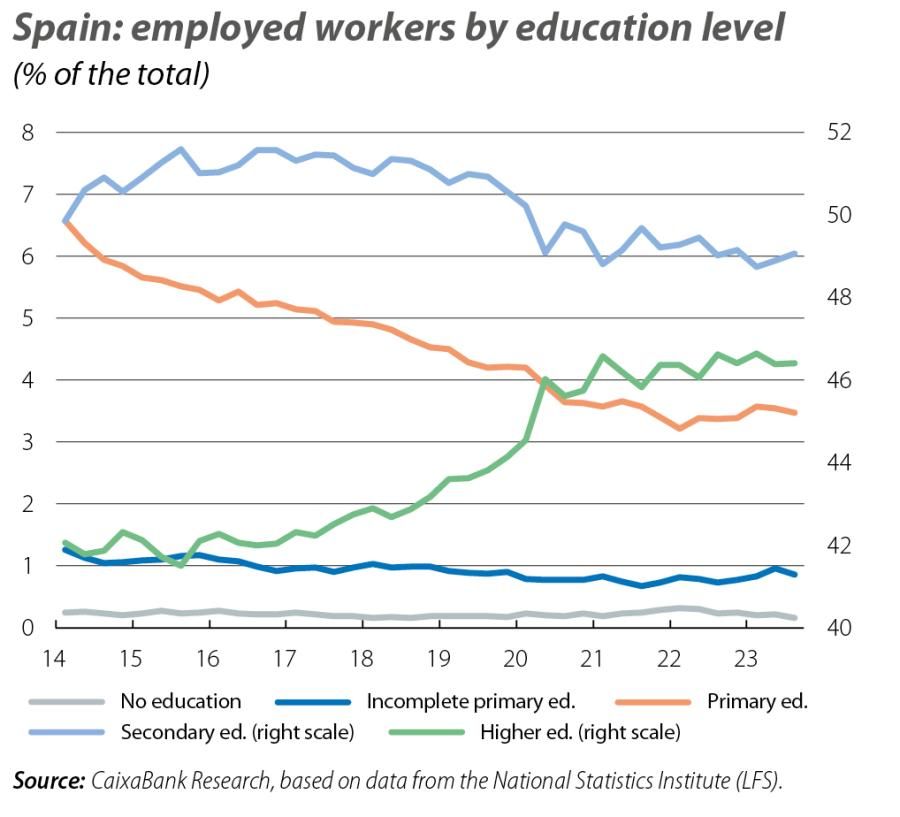
Also, the number of workers with higher educational (higher vocational training and university degrees) has grown well in excess of the other categories, almost doubling the average, at 12.0%. In particular, 46.4% of Spanish workers have higher education, 2.3 points more than before the pandemic and significantly above the Euro area average (39.0%). Of the increase in employment in the period (1.3 million), 81.4% (almost 1.1 million) are workers with higher education, while those with secondary education grew by 340,000 and those with primary or lower education decreased by 98,000.
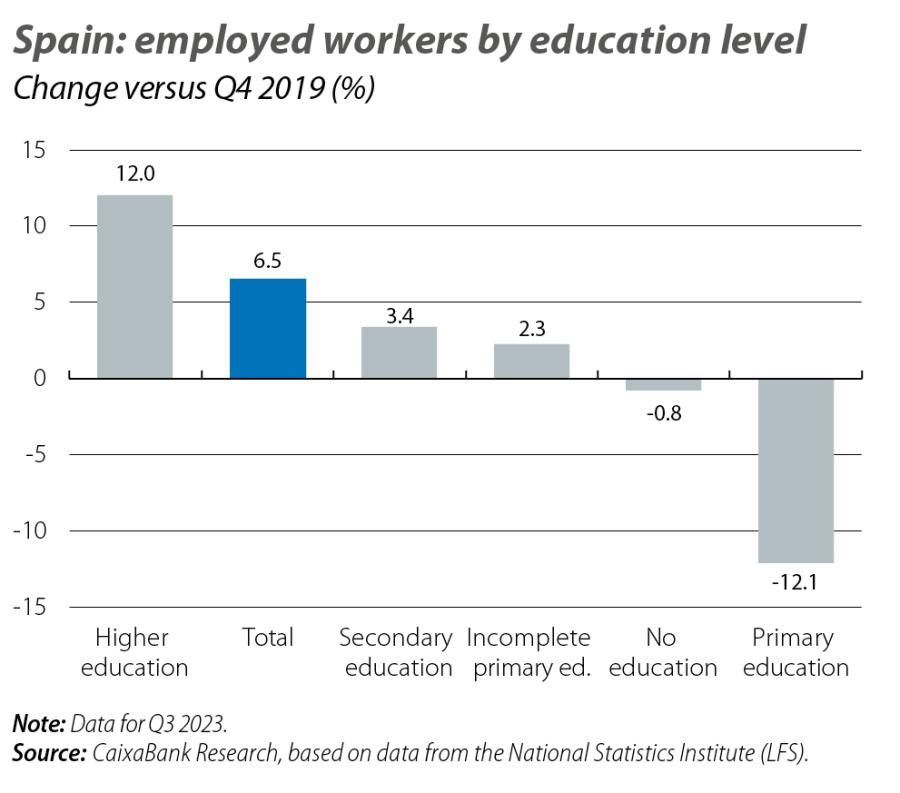
Looking at the nationality of those in work, the weight of foreign or dual-nationality workers with higher education relative to the total number of employed workers with higher education has grown slightly since 2019 (11.9% vs. 10.8%). Of the total increase in foreign workers since the end of 2019 (816,000), 27.8% had higher education and 61.6% had secondary education (the remaining 10.5%, primary or lower).
However, despite the increase in the percentage of workers with higher qualifications, Spain has the highest rate of over-qualification in Europe, reflecting the significant mismatch between the profiles demanded by companies and those offered by workers: 35.9% of those employed with this education level do not work in occupations associated a priori with their university degrees (data from 2022), compared to 23.5% in the euro area as a whole.1 But over-qualification does not only affect the most qualified workers: a quarter of those with upper secondary education (second-stage vocational training and baccalaureate) work in occupations that require lower qualifications, which may be related to a «crowding out» effect:2 those with higher qualifications displace workers with secondary education to more basic occupations.
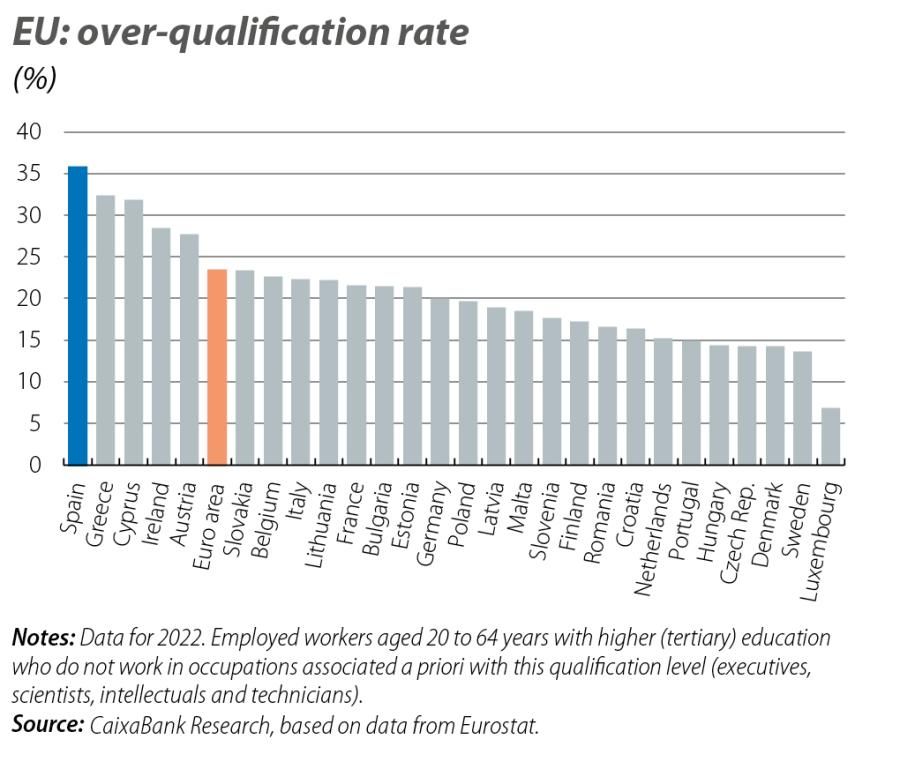
The problem of over-qualification affects the immigrant population to an even greater degree – a phenomenon which is widespread across the EU but particularly pronounced in the case of Spain: 52.2% of foreign workers in our country are overqualified, according to the Eurostat definition, compared to 34.5% for Spanish workers (the percentages for the euro area are 36.6% for foreigners and 22.4% for nationals).
According to workers’ occupational category, jobs which, in principle, require higher qualifications (executives, managers, technicians and professionals) have recorded double-digit growth rates and have increased their weight relative to the total by almost 2 points, to 35.2%; plant and machinery operators have also grown above average (6.6%) and have maintained their relative weight at 7.8% of the total. On the contrary, the occupations that have experienced the lowest employment growth are mostly medium-low-skilled jobs: tertiary workers (personal services, catering or sales) grew by 5.6% to represent 21.9% of the total, 0.3 points less than prior to the pandemic; administrative workers grew by 3.1% and account for 10.1% of the total (vs. 10.4%); manufacturing and construction workers grew by 2.4% to 10.6% (vs. 11.0%), and elementary occupations grew by just 2.1% to stand at 12.0% (vs. 12.5%).
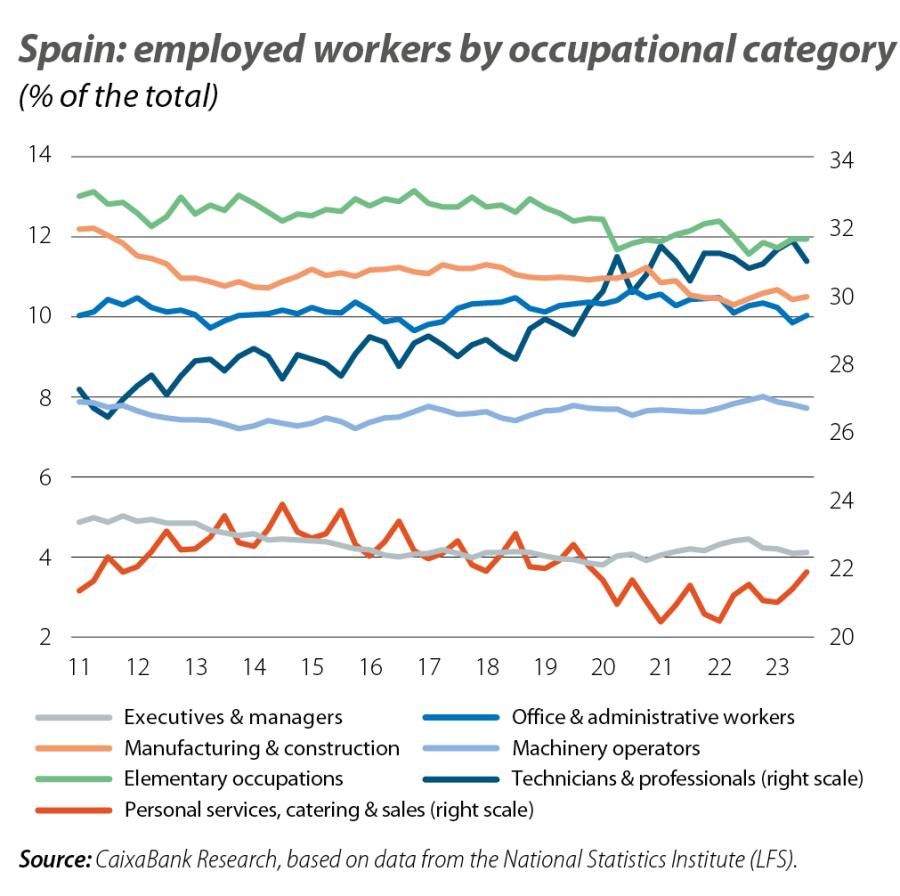
Based on the above, it appears that, in both absolute and relative terms, the gap between the number of more qualified workers (which has increased by almost 1.1 million, or 2.3 points relative to the total) and workers in occupations that theoretically require higher qualifications, regardless of their level of education (783,000 people and 1.7 more points), has widened. This either reflects an oversupply of skilled workers in certain job profiles or it indicates that the labour supply is poorly matched to the qualifications that are demanded by companies in these occupations.
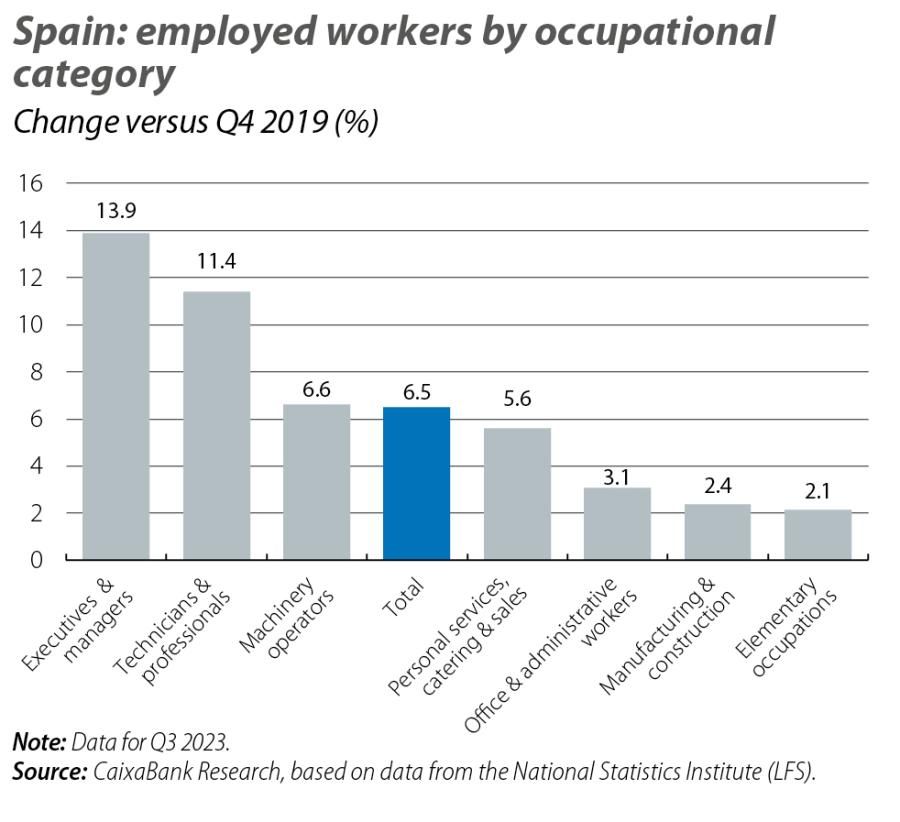
Ultimately, the educational level of the population is a determining factor for productivity and employment. In a country with significant educational imbalances, reflected in the difficulties companies experience in finding the right profiles to fill their vacancies, and with the added handicap of demographic ageing, which limits the growth of the labour force by making the search for talent more difficult,3 there is an ongoing need to encourage investment in human capital and to adapt the education system to the new skills demanded by the market, so as to make the most of the training in human capital.
- 3. See SEPE (2023). «Desajuste educativo en el mercado de trabajo en España», Revista Cuadernos del Mercado de Trabajo, October; and Randstad Research (2023): «El mundo del empleo tras dos años de pandemia».



